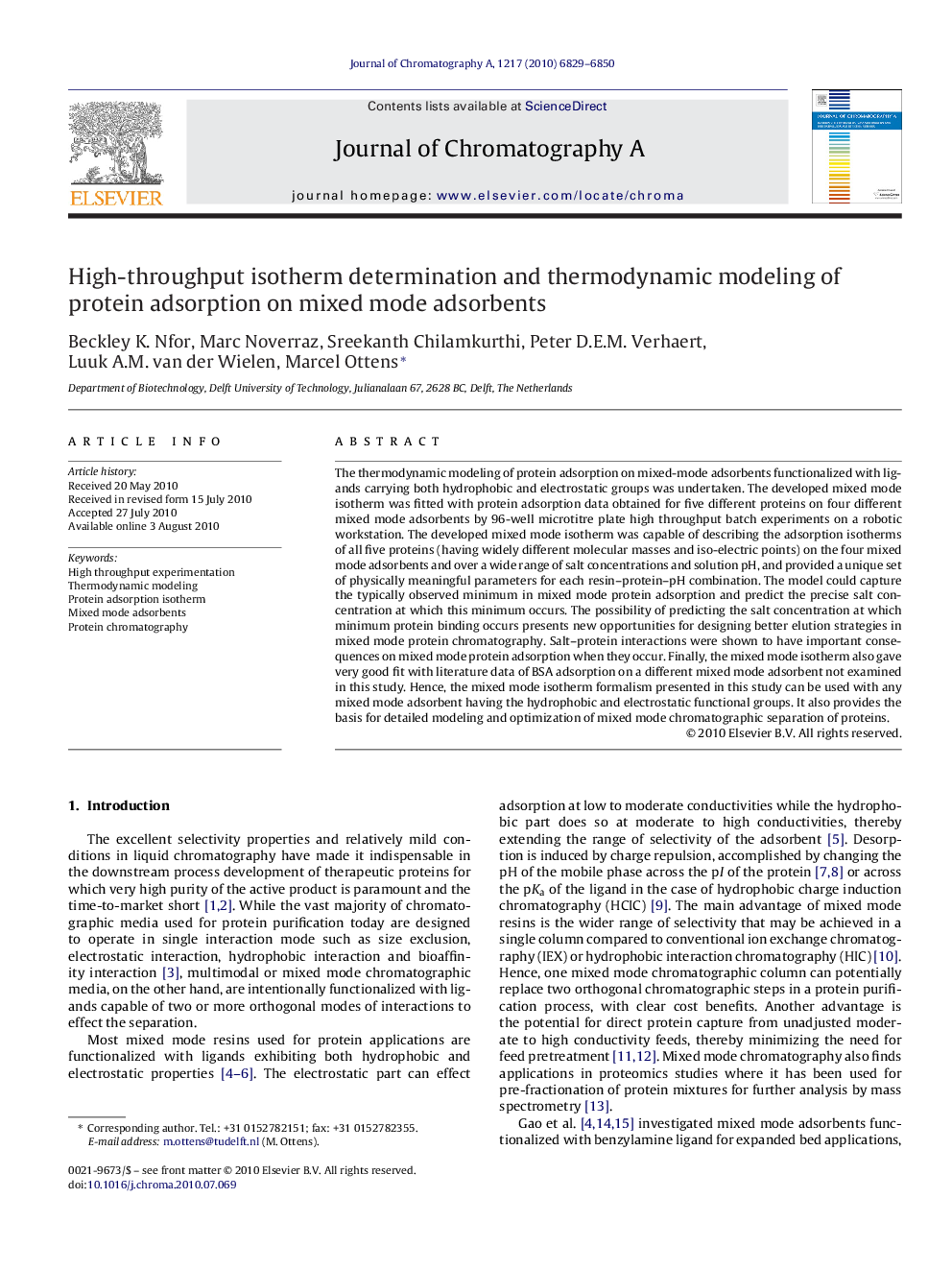| Article ID | Journal | Published Year | Pages | File Type |
|---|---|---|---|---|
| 1202912 | Journal of Chromatography A | 2010 | 22 Pages |
The thermodynamic modeling of protein adsorption on mixed-mode adsorbents functionalized with ligands carrying both hydrophobic and electrostatic groups was undertaken. The developed mixed mode isotherm was fitted with protein adsorption data obtained for five different proteins on four different mixed mode adsorbents by 96-well microtitre plate high throughput batch experiments on a robotic workstation. The developed mixed mode isotherm was capable of describing the adsorption isotherms of all five proteins (having widely different molecular masses and iso-electric points) on the four mixed mode adsorbents and over a wide range of salt concentrations and solution pH, and provided a unique set of physically meaningful parameters for each resin–protein–pH combination. The model could capture the typically observed minimum in mixed mode protein adsorption and predict the precise salt concentration at which this minimum occurs. The possibility of predicting the salt concentration at which minimum protein binding occurs presents new opportunities for designing better elution strategies in mixed mode protein chromatography. Salt–protein interactions were shown to have important consequences on mixed mode protein adsorption when they occur. Finally, the mixed mode isotherm also gave very good fit with literature data of BSA adsorption on a different mixed mode adsorbent not examined in this study. Hence, the mixed mode isotherm formalism presented in this study can be used with any mixed mode adsorbent having the hydrophobic and electrostatic functional groups. It also provides the basis for detailed modeling and optimization of mixed mode chromatographic separation of proteins.
